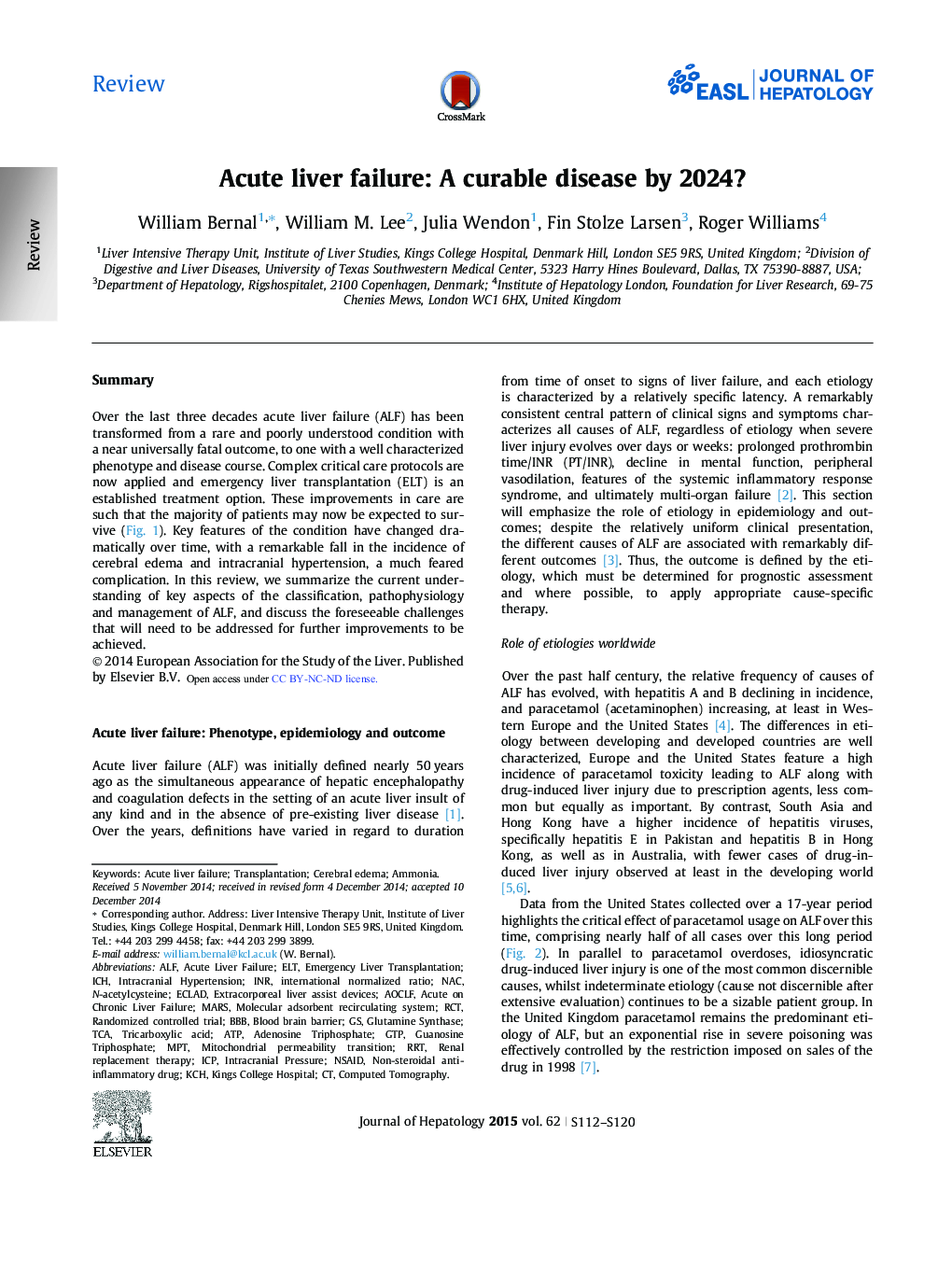| Article ID | Journal | Published Year | Pages | File Type |
|---|---|---|---|---|
| 6103169 | Journal of Hepatology | 2015 | 9 Pages |
SummaryOver the last three decades acute liver failure (ALF) has been transformed from a rare and poorly understood condition with a near universally fatal outcome, to one with a well characterized phenotype and disease course. Complex critical care protocols are now applied and emergency liver transplantation (ELT) is an established treatment option. These improvements in care are such that the majority of patients may now be expected to survive (Fig. 1). Key features of the condition have changed dramatically over time, with a remarkable fall in the incidence of cerebral edema and intracranial hypertension, a much feared complication. In this review, we summarize the current understanding of key aspects of the classification, pathophysiology and management of ALF, and discuss the foreseeable challenges that will need to be addressed for further improvements to be achieved.
